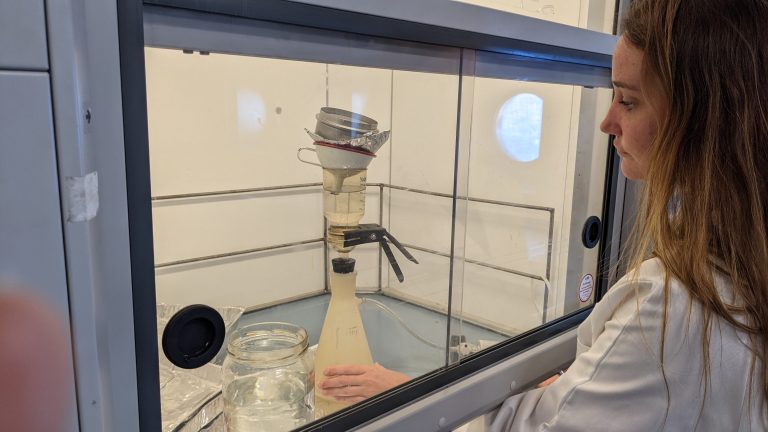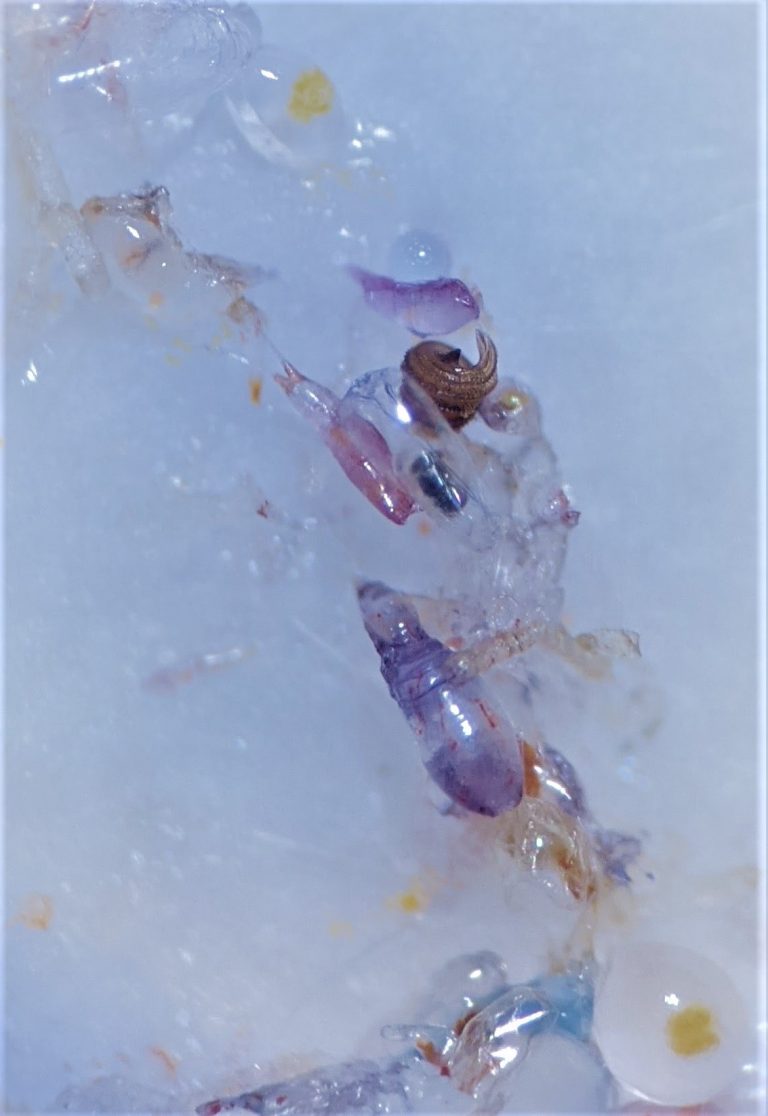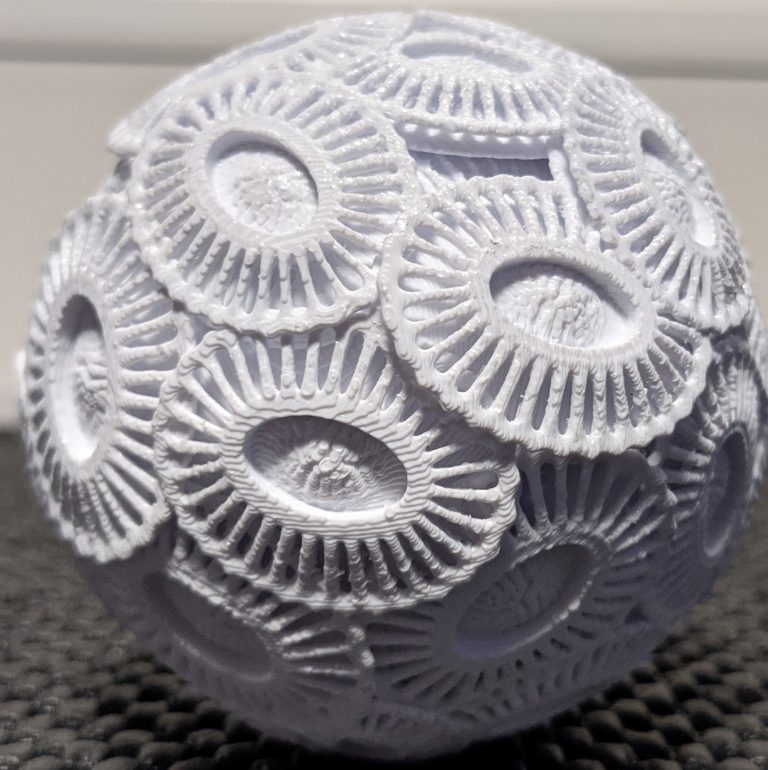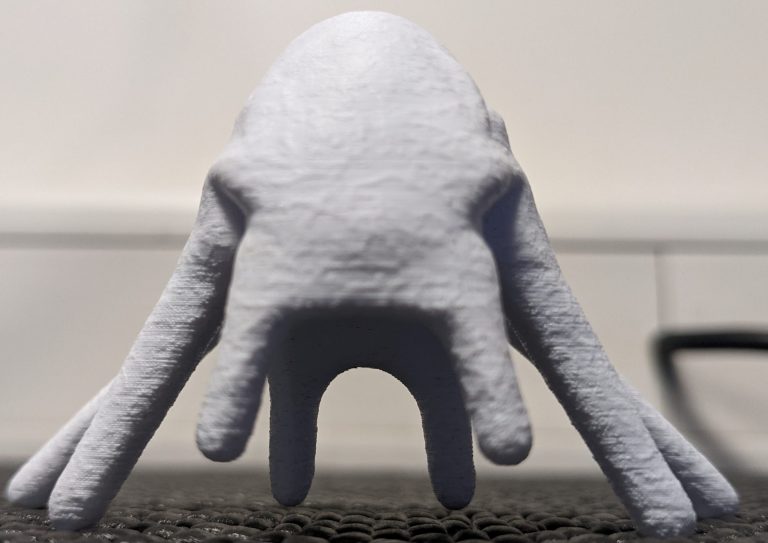My name is Lauren Huet. I am a Marine Biology student at James Cook University in far North Queensland, Australia. I am interested in marine pollution and am ever curious about the impact pollution has on ocean life. I was extremely excited to be given the opportunity to come aboard the R/V Falkor to work with a fantastic team of scientists and crew to sample microplastics. What I did not expect from my time in the lab working on these samples was a massive appreciation—or some might call it an obsession—with the microscopic heroes of our ocean, plankton.

What immediately struck me about the plankton was their incredible diversity—the beautiful, vibrant colours, semi-alien-looking forms, and sheer abundance. Plankton are a uniquely diverse group, microscopic phytoplankton, tiny zooplankton, bioluminescent bacteria and families of jellyfish that can weigh up to 80 kg, span 1 meter across with tentacles over 10m long. Here we will explore the two main groups of plankton: phytoplankton and zooplankton. Each of these groups plays a unique role in the marine ecosystem, making them vital to everyday life.

Phytoplankton are marine plants. They are photosynthetic, just like land plants, which makes them massive producers of the oxygen we breathe. There are two major groups of phytoplankton, Cyanobacteria (blue-green algae)—which evolved 3.5 billion years ago, invented oxygenic photosynthesis, and gave rise to all land plants—and Microalgae. The coccolithophore is an example of microalgae. It is only 0.001 mm in size and can be found globally. In its growth phase, Coccolithophores make plates called coccoliths out of calcium carbonate. They are the leading producer of calcium carbonate in the ocean and form the basis of sedimentary rocks, like the iconic White Cliffs of Dover. Coccoliths are made from one part calcium, one part carbon, and three parts oxygen. For each molecule of coccolith made, there is one less carbon atom roaming freely around in the atmosphere contributing to greenhouse gases.

Zooplankton are planktonic animals. Some of them are holoplankton, which means they spend their entire life floating or swimming in the water column. Others are meroplankton, which means they have a planktonic larval phase spent in the pelagic open ocean and a benthic juvenile and adult phase. For example, adult sea urchins release sperm and eggs into the water column in a process called broadcast spawning. Once an egg is fertilised, an embryo is formed. This embryo develops into a pluteus larva, which is its planktonic phase. After this, the larva undergoes metamorphosis, and the juvenile returns from the open ocean to live in the benthos, where it grows into an adult. Many animals in the sea have planktonic phases, such as fish, worms, jellyfish, sea snails, and many other invertebrates.

We have a lot to thank plankton for in our everyday lives. They produce over 50% of the oxygen we breathe, remove carbon from the atmosphere reducing greenhouse gases, and are the entire basis of the marine food web—meaning all the fish in the sea rely on them for a meal. These fish feed highly-adapted seabirds and over 70% of the global population depends on them as a source of protein. Plankton are vital to our everyday lives. Understanding their importance in the ecosystem and the impact that microplastics have on them as they move through the food web is a crucial link between land and sea and must be understood to grasp the spread of microplastics further. After completing my undergraduate degree, this will be an area of continued research for me and the focus of my master’s project.

